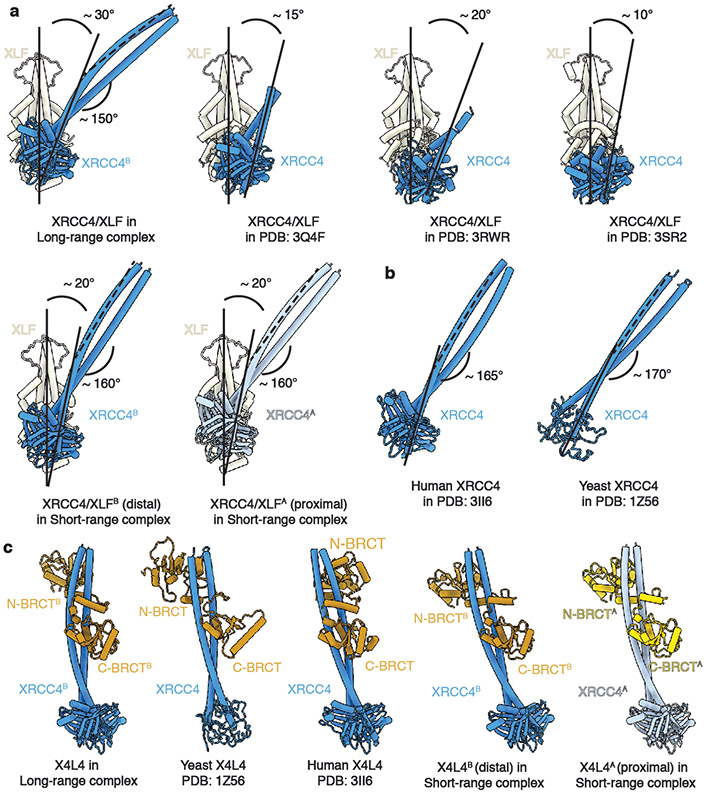Extended Data Fig. 4. Comparing the structure of LigIV-XRCC4-XLF scaffold among the LR synaptic complex, the SR synaptic complex, and previously published models.
a, Structure of XRCC4-XLF from the LR complex is shown in comparison with XRCC4-XLF filamentous repeat crystal structures and the ones from the SR complex (both copies). The XLF dimer is used to align all of the models shown here. Solid lines are aligned with the coiled-coils (CC) of XLF (vertical) and XRCC4 (tilted), and the angles in between are shown, respectively. Dashed lines are aligned with the C-terminal half of CC of XRCC4 when full helices are present, and the bending angles are shown as well. b, XRCC4 in the crystal structure of human and yeast LigIV-XRCC4 complex24,34 are shown after aligning with XRCC4 in the LR complex shown in a. The bending of XRCC4 CC is more similar to the one in the SR than in the LR complex. c, Structure of LigIV-XRCC4 complex from the LR complex is shown in comparison with human and yeast LigIV-XRCC4 crystal structures and ones from the SR complex (both copies). Color codes for XLF, XRCC4, and LigIV BRCT domains are the same as in Fig. 1.

